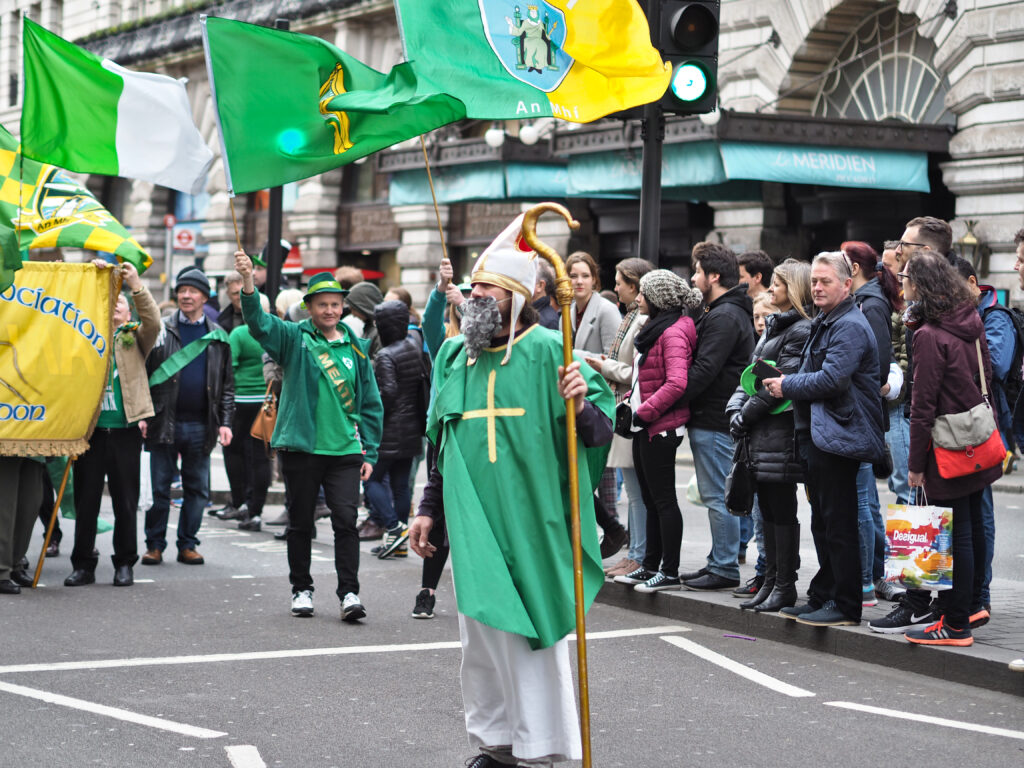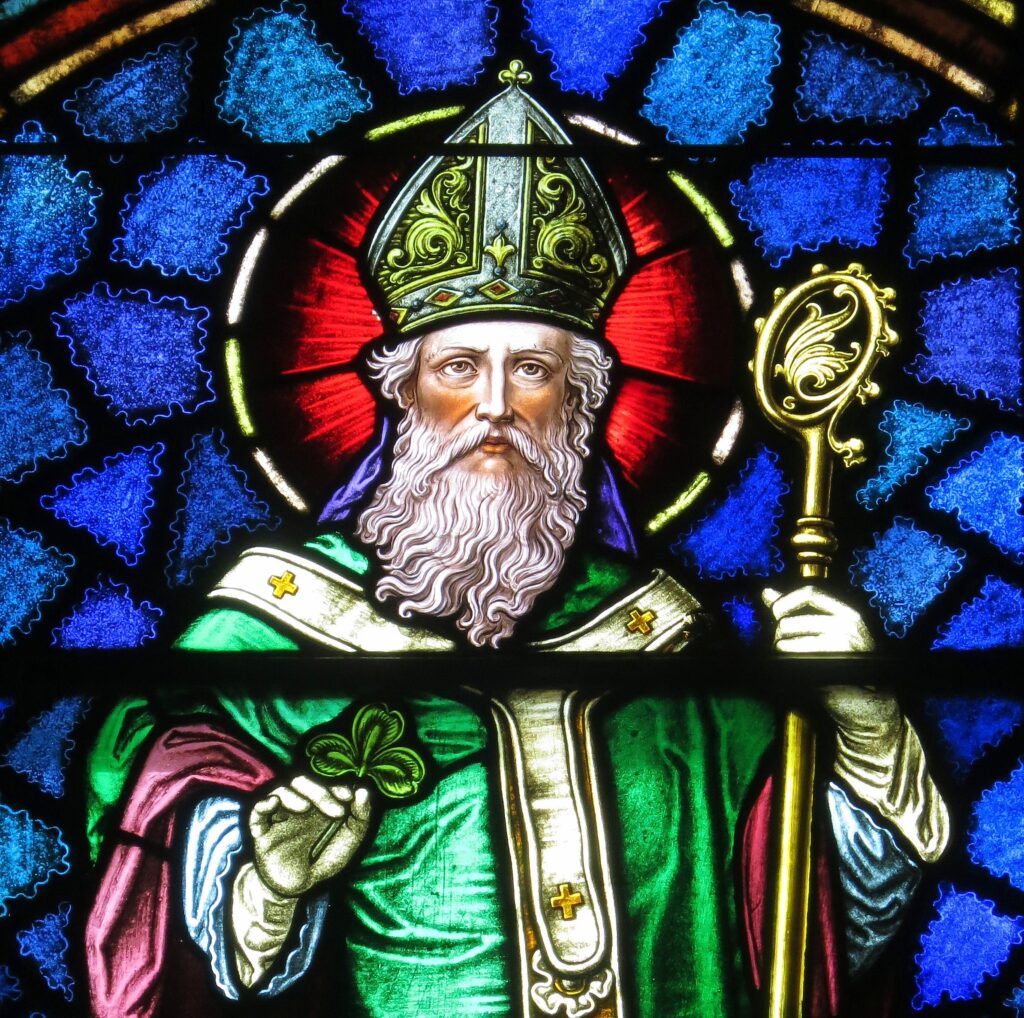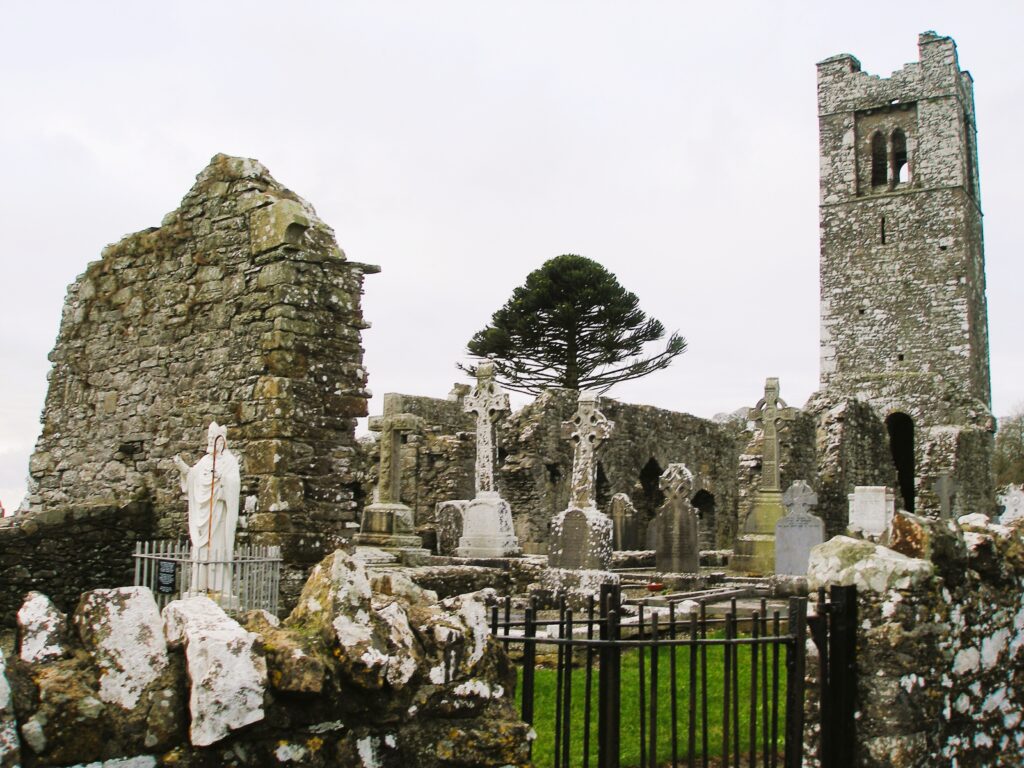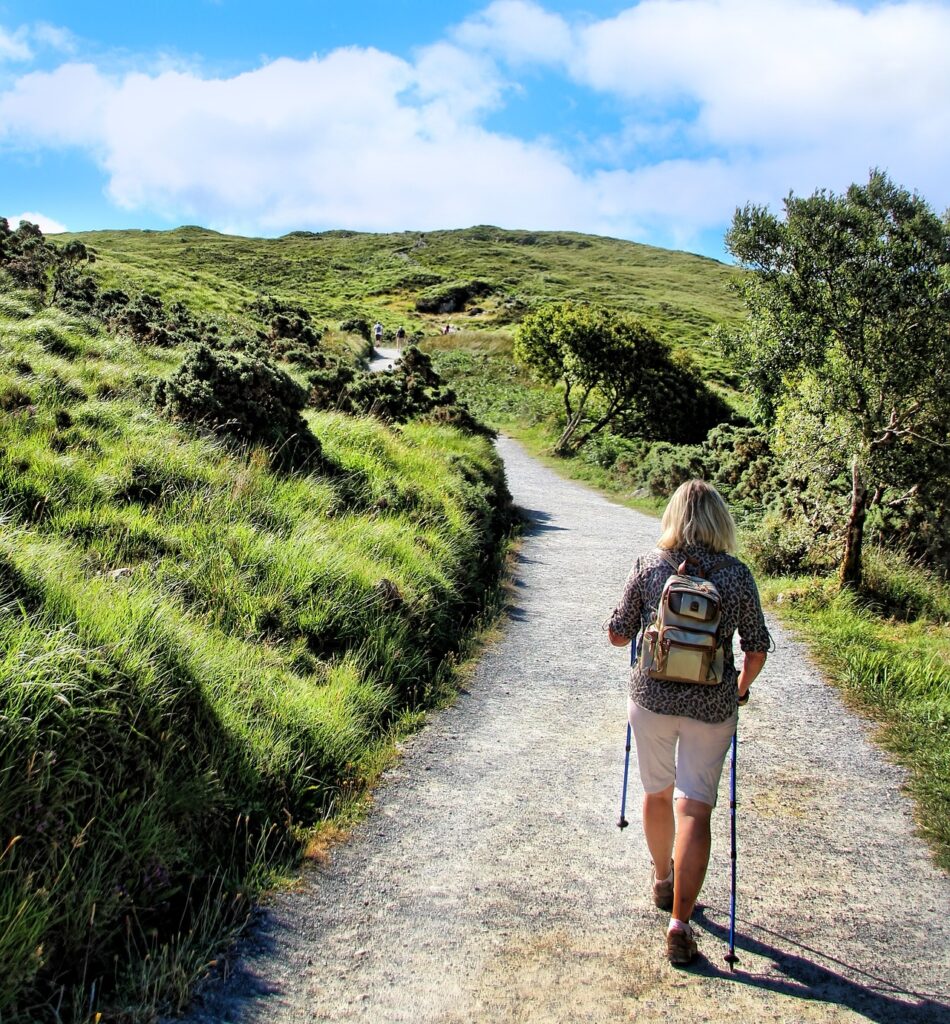St Patrick’s Feastday, March 17th
Sister Helen explains the origins of St Patrick's Day and how faith is lived in Ireland today.
Iconic buildings throughout the world turn green on St Patrick’s day. Large Parades are held in St Patrick’s honour in many towns and cities in different countries. Patrick is identified with Ireland as the National Apostle. The day set aside to recognise Patrick becomes a day to acknowledge and celebrate being Irish and of Irish descent. Wouldn’t it really be wonderful if the green buildings across the world on the feast of St Patrick were also reminders of our ‘green mission’, the care of the earth, our common home ? It would be a significant message for Ireland to offer our world and would be true to the form of Christianity that was lived here for the first millennium.
We will look at the man behind all these celebrations. The two earliest biographies of Patrick come from the 7th century. Muirchu’s Life of Patrick and Bishop Tirechan’s Account of St Patrick’s Journey promoted the cult of Patrick. However, a much more personal account of his life comes from his own hand. In his “Confessions”, Patrick outlines his spiritual journey. It was written towards the end of his life and is an outpouring of his soul to God.

Who is this man ?
We will let Patrick introduce himself. “I am Patrick, a sinner, the most unlearned of men, the lowliest of all the faithful… my father was Calpornius who was a deacon and son of the priest Potitus. He ministered in a suburb of Bannaven Taberniae, where he had a country residence nearby”. We see that Patrick came from a comfortable and religious background and that his father was a deacon and his grandfather, a priest. Patrick rebelled against his upbringing. However when he was taken captive to Ireland, he found himself isolated and very lonely amongst strangers. In desperation he turned to God. “More and more my love of God and my reverence for him began to increase”. As his relationship with God deepened, he allowed God to guide his life. “The power of God directed my way successfully and nothing daunted me until I reached that ship”, this became his escape from slavery.

A number of years later Patrick recounts “I was in Britain with my relatives who… begged me that I should never leave them. It was there one night that I saw the vision of a man named Victor who came… with an unlimited number of letters. He gave me one of them and I read the opening words which were “The voice of the Irish”….they shouted with one voice “We ask you, boy, come once more and walk once more among us”. I was cut to the very heart”.
As a result, Patrick returned to Ireland, as tradition has it, in the year 432. He lit the Easter fire on the Hill of Slane which was seen by King Laoghaire’s gathering at Tara. The Kings advisers said that the fire was to be put out as otherwise it would never be extinquished.

Patrick, Ireland, and Christianity.
The people of Ireland welcomed the Christian faith. Patrick saw himself as God’s ambassador to those people who were at the end of the earth. He travelled extensively and created Christian communities throughout the country imparting a faith and spirituality that was Trinitarian, Christ-centred, in tune with creation and integral to the everyday life of the people. Christianity flourished in Ireland in the 6th century and became a fusion of the creation mysticism of the old Druidic religion and the Gospel message of peace, joy, love and forgiveness. The spirituality that developed in early Christian Ireland is best expressed in a prayer what was written in the 8th century and was dedicated to St Patrick. We know it as ‘St Patrick’s Breastplate’. The author of the ‘Breastplate’ calls on the Trinity, Christ in his mysteries, archangels, angels, prophets, and apostles to give protection. In the fourth verse an intuitive sense of God’s presence pervading all of creation is expressed. It is the characteristics or ‘isness’ of nature that are called upon, the light of sun, the radiance of moon, the splendour of fire, the speed of lightening, the swiftness of wind, the firmness of rock and the stability of earth. In the 8th verse of this protection prayer, we ask to be surrounded by the presence of Christ and that Christ be in the hearts of those who think of me or speak of me. This was the spirituality which emanated from the monastic communities which were founded all over the country. It was not until the 12th century that the Diocesan structure was established.
Other “camino’s” but one inspiration.
Today, people in Ireland are consciously or unconsciously returning to finding God in creation. Walking has become a very popular activity, whether this is in the newly created ‘greenways’ or the re-established old pilgrim paths. The beauty of nature is being appreciated anew. Many of ‘the walks’ are now being called ‘camino’s’. It is noticeable that for the most part our younger people are no longer filling our Church pews. However, many of them are interested in the spiritual search, in justice issues and care of the vulnerable in society. It is mostly older people who are attending Church Services. Hopefully the promotion and living of ‘Laudato Si’ and the ‘Synodal Pathway’ will help to bring new life into Christianity in Ireland. May the rich heritage of the spirituality of St Patrick continue to inspire us to live meaningfully in the 21st century.
Sister Helen Grealy, community of Dublin & Cork
